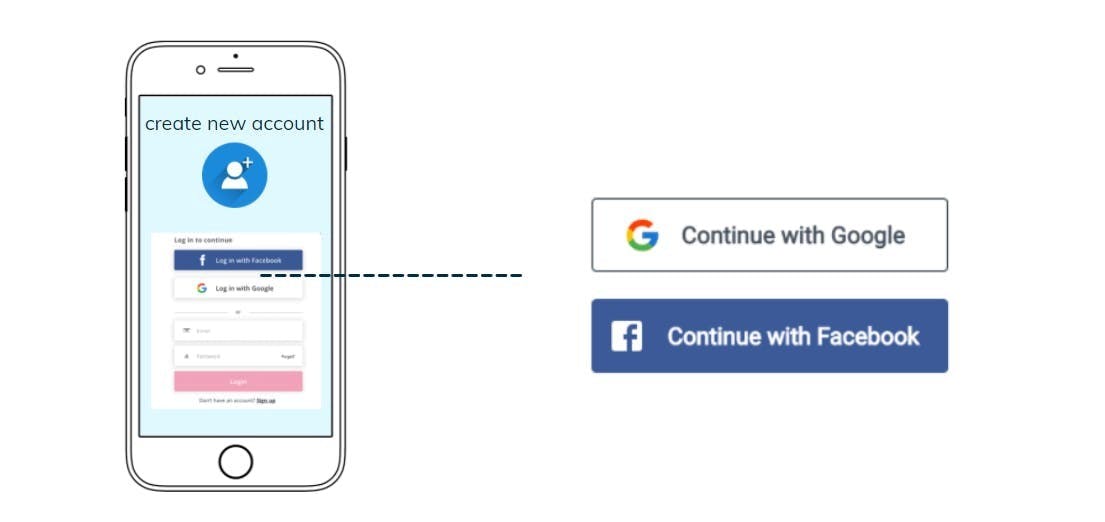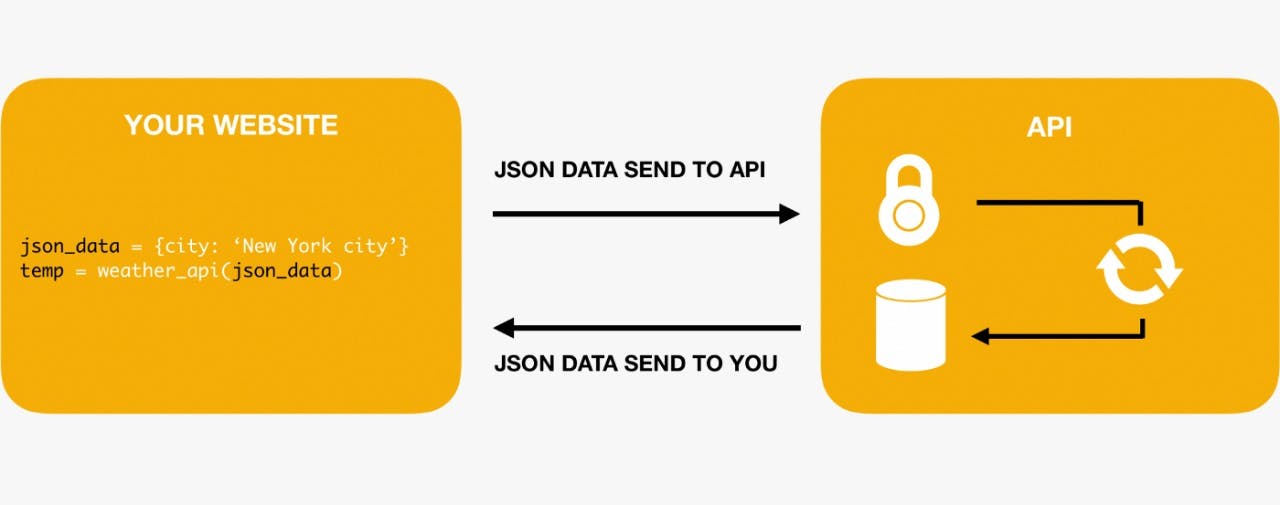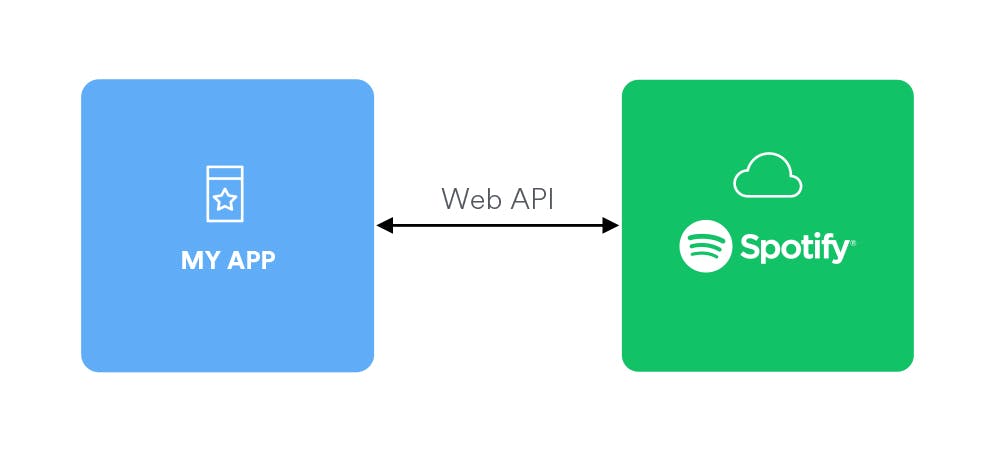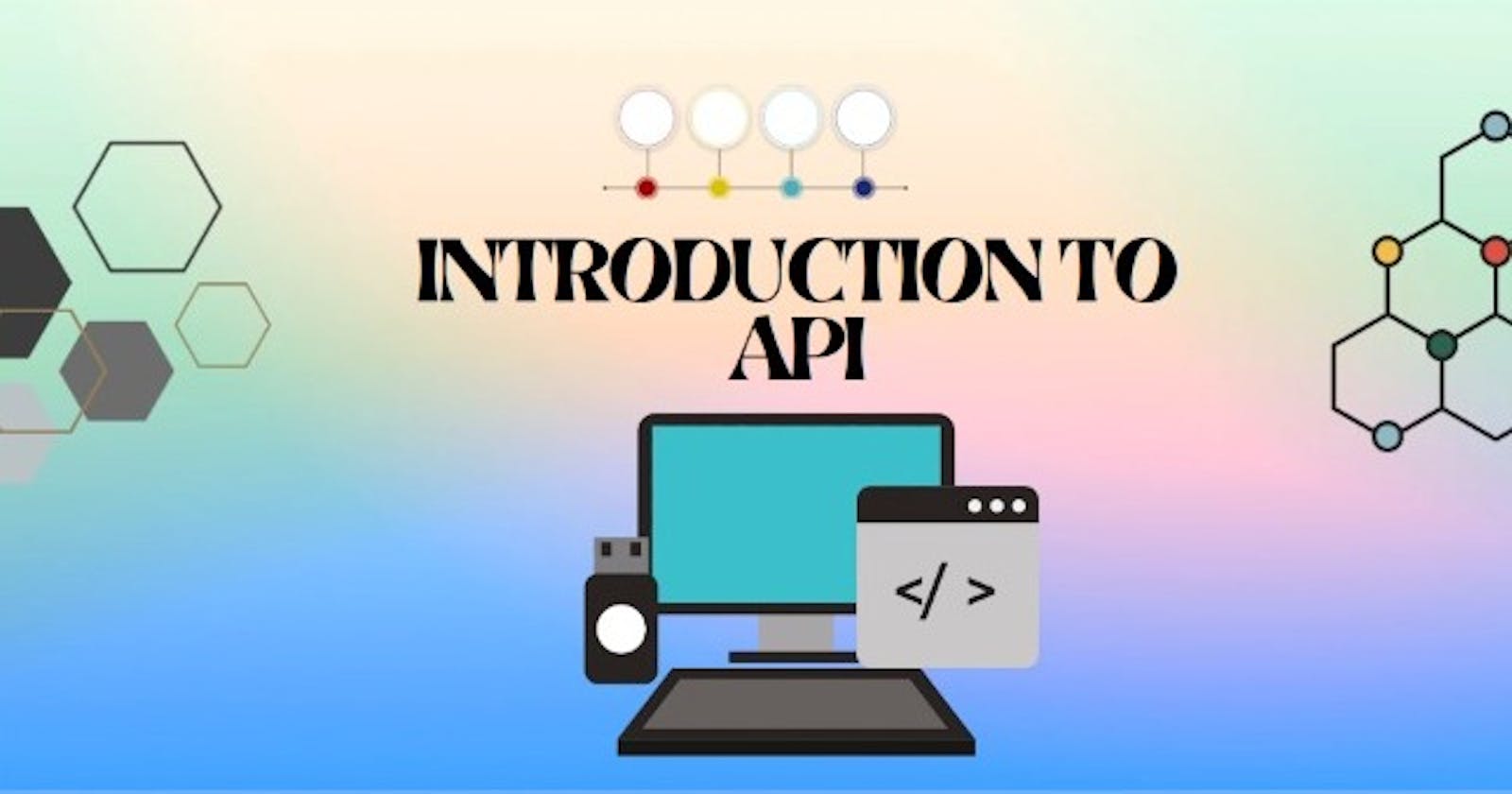The terms API are presumably familiar to anyone who has been involved in development for some time and at the same time, many people have never heard of API much less what it does. They probably think it is a cool new acronym that makes their texting easier like LOL or LMAO.
In this article, we’ll not only cover what APIs are, but we’ll also answer the question: “How do APIs work?” Understanding the function of APIs is the key to understanding how they can help business users in any role accomplish more, faster - without necessarily having to learn to code.
What is an API?
The term "API" stands for Application Programming Interface and has been used by software for a long time to access data, server software, and other applications.
We can view APIs as some little magical boxes where we send data — then get data back.
This tiny box is nothing more than a server-side script. It serves as a go-between for us, the client, and them, the server. If we provide our intermediary with the right instructions, the middleman will gladly comply when we ask him for information, make a modification, or remove something.
An API is a connection between computers or between computer programs. It is a type of software interface), that offers a service to other pieces of software.

The API is not the database or even the server, it is the code that governs the access point(s) for the server.
Now. let’s look at a real-world example. Whenever you create a new account on an application, you get an option to signup with Facebook or Google. Ever wondered how that works?

Well, Facebook and Google already have your inputs, so instead of performing the tedious task of capturing every user’s information and verifying the credentials, the app accesses their database through the API to verify your credentials.

Another very famous example is a weather app. If you want to build one, you cannot physically go and capture the readings from all over the world. Instead, you can use a third-party API to fetch the weather details.
Now that you have a better understanding of what an API is let’s look at how they work.
How do APIs work?

APIs enable communication between your product or service and other products and services without requiring you to understand how they are built. By making app development simpler, time and money can be saved. APIs provide you freedom, make design, administration, and use simpler, and open up options for creativity when you're creating new tools and products—or managing ones that already exist.
For various programming languages, such as JavaScript, Python, or PHP, APIs are frequently available. API providers typically offer some documentation on how to use their API. You must insert a piece of code that the API creator provides into your program. Once installed, you can make an information request. Requests must follow a specific format. primarily in JSON format. See the following JSON request example:
{
city-information:
{
city-name: "New York City",
city-country: "US",
}
}
The API receives this piece of JSON data. It is aware of this knowledge. Following that, the user receives the desired data in JSON format.
Process of an API
The diagram below explains all the different steps of an API in detail:

Functions of API
In simple terms, an API serves as a kind of electronic middleman, transmitting data from one interface, such as a mobile app, to another. APIs link various components of a software platform together to make sure that data is sent to the proper location.
Examples of APIs
- Twitter APIs
The Twitter API makes it possible for programs to access Twitter in novel and sophisticated ways. Take advantage of Twitter's fundamental components, including Tweets, Direct Messages, Spaces, Lists, users, and more.
- Instagram APIs
Using Instagram Graph API, Instagram Professionals – Companies and Creators — can use the app to manage their presence on Instagram. The API can be used to obtain and publish their media, manage and respond to comments left on their content, locate content that has been hashtagged, find media where they have been @mentioned by other Instagram users, and obtain basic metadata and metrics about other Instagram Businesses and Creators.
- YouTube APIs
You can include a number of YouTube features into your application using the YouTube Data API. You may edit channel settings, manage playlists and subscriptions, add videos, and more via the API.
- Spotify Web APIs
The Spotify Web API endpoints return JSON metadata about music artists, albums, and tracks, directly from the Spotify Data Catalogue.

- Google Maps APIs
You can create real-world, real-time experiences with the latest Maps, Routes, and Places features from Google Maps Platform.
Conclusion
APIs are revolutionizing the way we share and access data.
As long as organizations continue to use APIs in their daily operations, they will be there for a very long time. They are easy to use and incredibly adaptable. Now that we know a little bit more about what APIs are and how they operate, we shouldn't be afraid of them.
Try to work with some APIs yourself.
-------------------------------------------------------------------------------
Liked our content? Do kindly like and share to help other students in your network. And don't forget to subscribe to the newsletter to NEVER miss an article!
Happy coding 🙂

